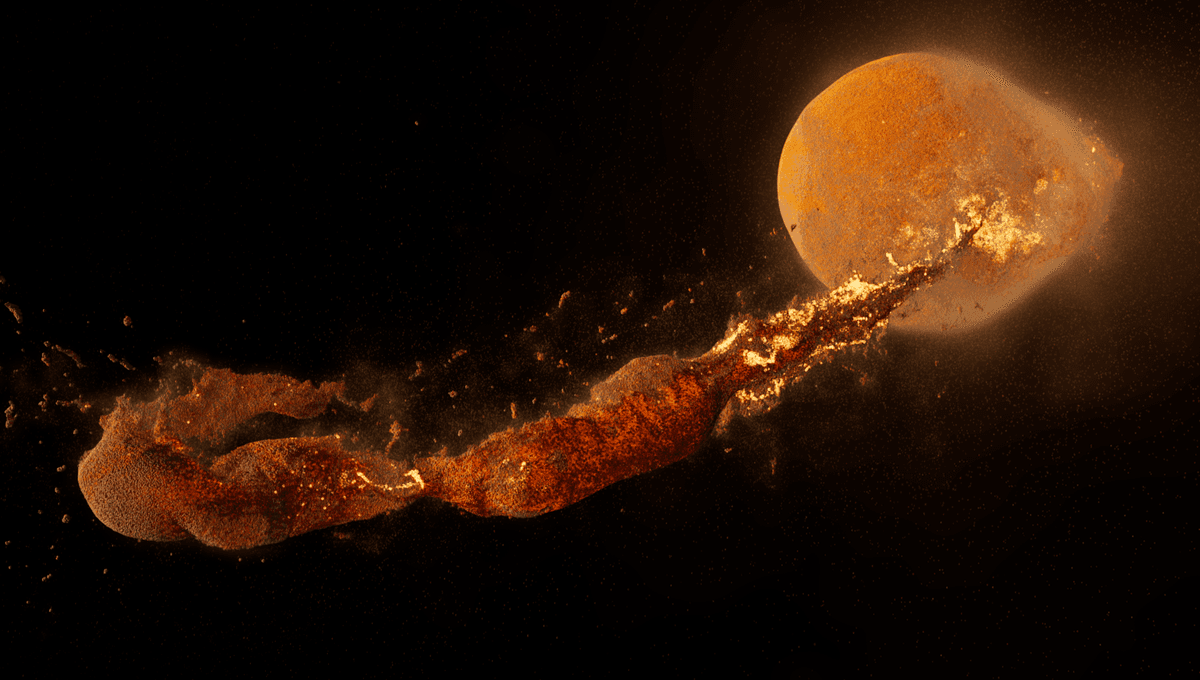
If we were to rewind the clock back 4.5 billion years, our planet would be massively different. And seeing Earth from space, you’d notice a glaring omission: the Moon would not be there. Its arrival will come only after a Mars-like body ends up hitting our planet. This cataclysmic event changed our planet and threw enough material into orbit to create a natural satellite quite unlike anything else in the Solar System.
There are different possibilities for how the Moon formed. It could be a captured object; it could have formed together with Earth, either at the same time or as a single body split in two; or it could be the result of a collision. It is this last that can explain the many odd properties of the Earth-Moon system without requiring some unlikely happenstance. That collision might be done and dusted, but the impacting planet continues to shape the fortunes of our world.
Enter Theia, mother of Selene
The idea centers around an object roughly the size of Mars, with a mass about 10 percent of our planet’s today – although it might have been larger, according to other hypotheses, almost equivalent to the proto-Earth. This world was called Theia, after the Greek Titan who was the mother of Selene, the Moon.
Originally, the hypothesis was that Theia gave the Earth a glancing blow, and the proto-Earth and Theia lost pieces ending up as one or two moons that eventually formed the Moon. It was thought that a direct collision would have been too much, breaking the Earth and Theia apart, creating an asteroid belt between Venus and Mars.
It was less than a decade ago that researchers started to consider that the collision could have been head-on. Theia slammed into the Earth, the two worlds becoming one and throwing plenty of material into orbit. Supercomputer simulations suggest that it might have happened in a matter of hours. The material in orbit might have created two objects: a large one near the Earth and a smaller one farther away. The larger one fell back to Earth and its motion pushed the smaller one, which would become the Moon, away.
Oxygen is the key
The crucial piece of evidence was a comparison between the oxygen levels of terrestrial and lunar rocks. They are indistinguishable, which suggests an extremely vigorous mixing of material.
“If we found an oxygen isotope difference between the Moon and the Earth, it would imply that the impact that formed the Moon was a glancing blow, where most of the impactors end up in the Moon,” lead researcher Professor Ed Young previously told IFLScience. “We set out to re-test those lunar and terrestrial rocks with the highest precision that we could obtain.”
Other supporting evidence for the cataclysmic beginning of the Moon is the near alignment of the orbit of the Moon with that of the Earth around the Sun, an agreement that allows eclipses to happen. There’s also the high angular momentum of the Earth-Moon system, the lower density of the Moon, the lack of lighter elements, and the fact that the molten past of the Moon can’t be explained with a simple accretion model.
Where are they now?
So, where is Theia now? Well, the collision certainly broke most of the traveling planet to smithereens, merging it with the Earth and furnishing some material to make the Moon. But maybe this is not the full story. It is possible that there are structures located around the Earth’s core that belong to Theia.
They are known as Large Low-Velocity Provinces (LLVPs). These anomalous formations are located beneath the African Tectonic plate and the Pacific Tectonic plate, very deep in the Earth’s mantle. They are denser than the surrounding material, which is why they sank – further supporting evidence that they were not there when the Earth formed and became layered.
Simulations agree with the hypothesis, showing that it is possible that Theia blobs got into the upper mantle and eventually moved to the bottom near the mantle-core boundary. If these are indeed remnants of Theia, they might have played a role in the formation of tectonic plates – something unique to Earth, which has shaped life on this planet.
It is not the only thing that Theia has left us with. Another gift apart from the Moon is the seasons. Those are created by Earth’s tilt, currently 23.4 degrees away from the perpendicular to the orbital plane (according to NASA). It is believed that it’s the devastating collision with Theia that shifted our planet.
Apart from the LLVPs, Theia and Earth might no longer be distinguishable – but their impact, both physical and metaphorical, will be with our planet as long as it exists.
Source Link: What Happened To The Planet That Earth "Ate"?